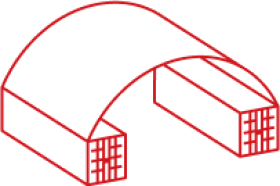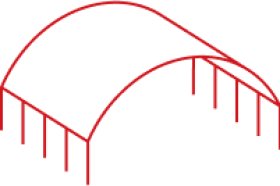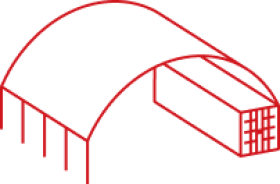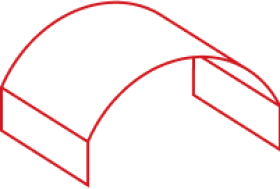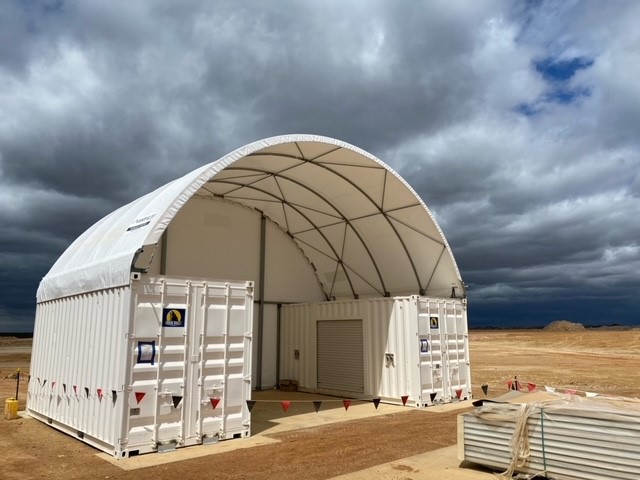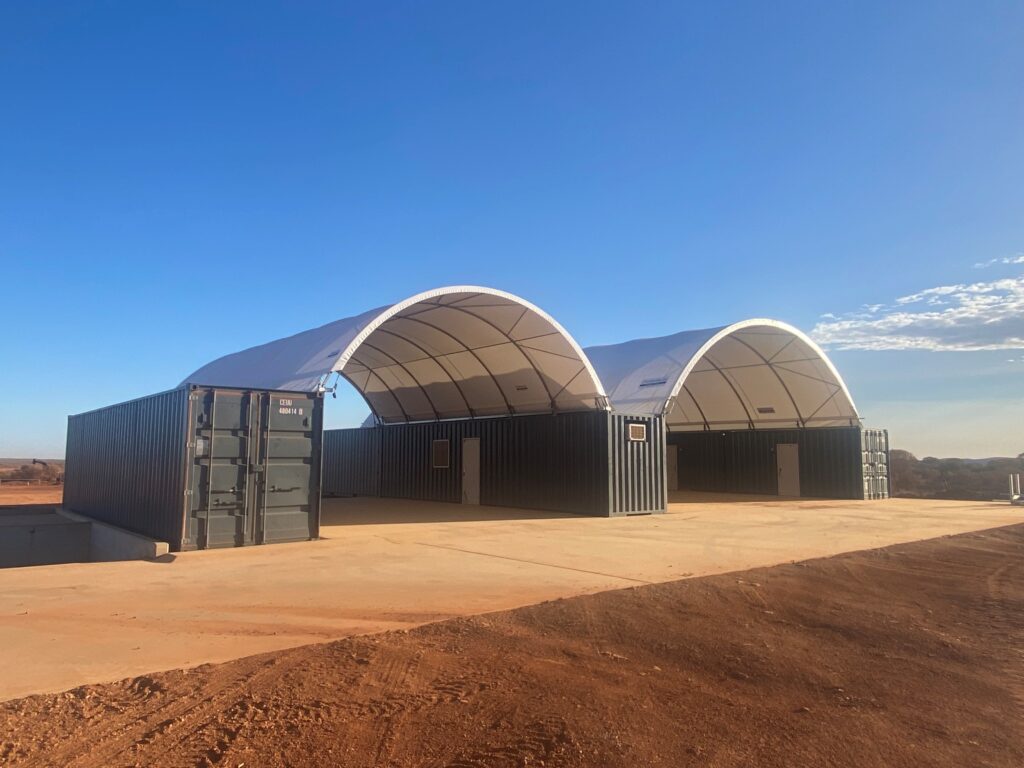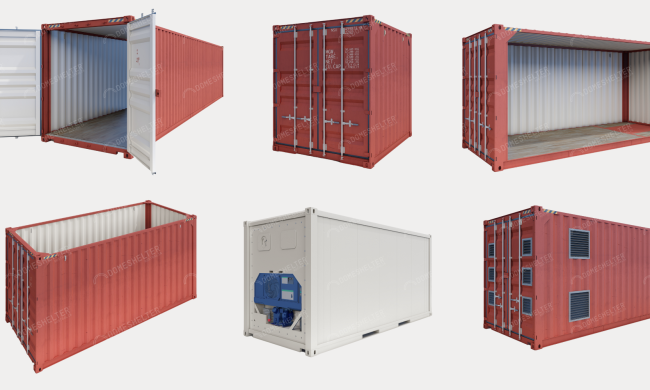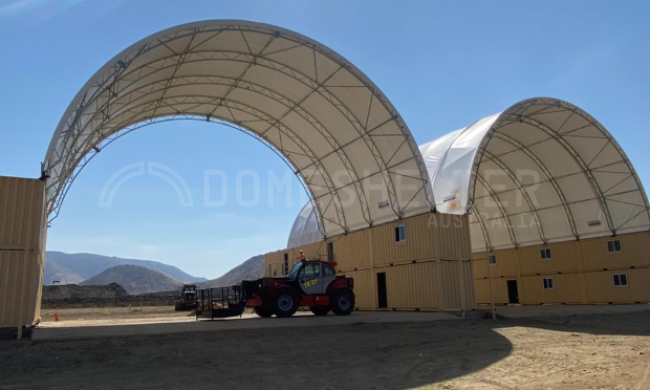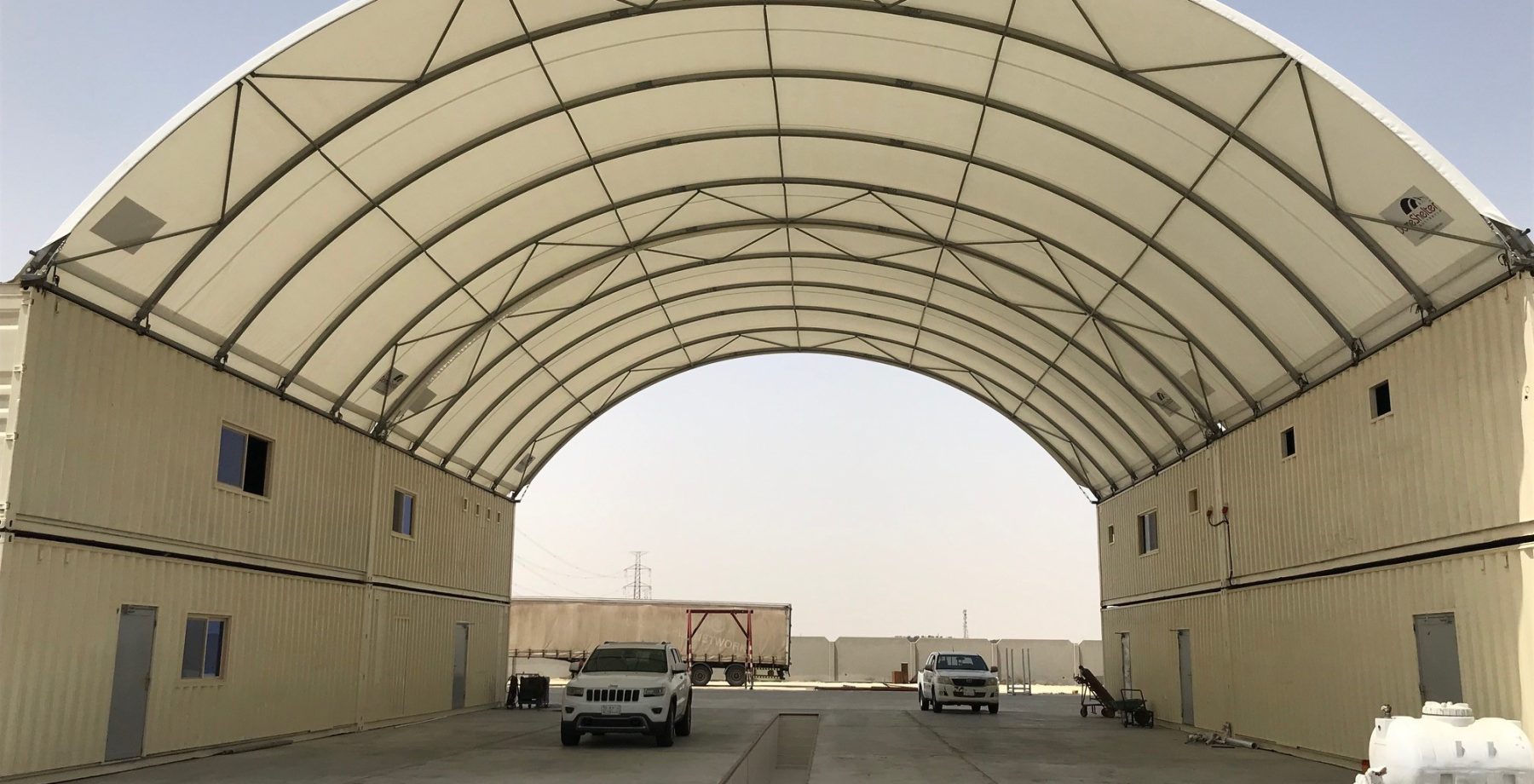
One of the first questions potential Fabric Shelter owners always ask is “how much is it going to cost?”
Understandably, when you make a significant investment for your company, you want transparency around the quoting process and what factors affect the final figure.
Like a car or house, Fabric Shelters have changing features and specifications, so it’s hard to give a definitive answer before any consultation has taken place. Still, it is possible to explain what elements influence the quoting process and determine the final cost of a Shelter.
For over 25 years DomeShelter Australia have been providing leading local and international mining and industrial companies with durable Fabric Shelters. We pride ourselves on honest and clear communication with our customers. This article lists 6 key factors that contribute to the cost of a Fabric Shelter so you can better understand what will be involved in your Fabric Shelter purchase.
Top 6 Factors That Influence Fabric Shelter Cost
The key components affecting Fabric Shelter pricing are as follows:
- Size
- Mounting and substructure type
- Location
- Certification/licencing requirements
- Installation
- Added extras
Each will influence the specifications of the Shelter and decide the final cost. Some are less flexible, such as the site location or required Shelter size. Others, including materials and non-standard extras, can change based on your budget and needs.
1. Size
While there are ‘standard sizes’ for Fabric Shelters – 6x6m or 12x12m, for example – many are specially designed to suit a specific need. The intended use of the Shelter will determine the required dimensions and whether a fit-for-purpose Shelter will be needed over a stock standard size. Height, width and length requirements will all affect the eventual cost.
A standard 6x6m Shelter to protect a light vehicle from the elements is typically around the $6-7k price range. For a complex order, for example one needed to house specific large vehicles, estimation becomes more complex and the cost will understandably increase.
2. Mounting Option
There are a few common substructures Fabric Shelters can be attached to:
- Sea containers
- Steel posts
- A combination of sea containers and steel posts
- Concrete walls
- Truss frames
The cost will ultimately depend on the required height of the structure; if shipping containers are used, for example, they may need to be stacked two or three high to achieve the correct height to accommodate equipment. Depending on the project requirements, shipping containers may give the most value-for-money, as they offer the option for added storage, office space, etc., to diversify the potential of the shelter. For a smaller project that doesn’t require these variables, however, simple post mounts could potentially suffice as the most cost-effective option.
The method of securing the roof structure to the substructure will also influence the cost. Welded brackets are industry-standard and least expensive, though they can be unreliable, with potential for error in the placement of the brackets that can lead to the roof structure being misaligned. At DomeShelter Australia we offer specially engineered welded and bolt lock mounted rails, which not only handle the roof load more effectively by spreading the burden evenly along the rail, but are also pre-welded in the factory, eliminating the potential for costly error corrections on-site.
3. Location
Location will affect cost of delivery as well as the required specifications of a Fabric Shelter. Wind region categories, terrain and other natural factors can all impact how a Shelter is engineered and therefore the overall price.
Wind regions especially can have a dramatic impact on cost, potentially affecting the design and engineering of a Shelter to ensure suitability for its location. The necessity for end walls or intensive hold-down requirements can arise depending on wind severity.
In the case of DomeShelter Australia, our Fabric Shelters can be engineered to withstand up to Region D wind speeds. It’s important to check a company’s engineering and welding standards to decide whether their structure is appropriate for your proposed location.
4. Certification Requirements
In some situations, building licencing requirements will mean engineering certifications must be provided before a Shelter is constructed, and this will come at an added cost.
DomeShelter Australia offers site-specific engineering, which starts from around $1850, and increases from there depending on the complexity and size of the project.
5. Installation
Most Fabric Shelters can be installed easily by your own crew. At DomeShelter Australia we provide detailed, easy to follow instructions with all our Shelter kits, and customer feedback indicates our structures are quick and easy to put together.
Whether you opt to install yourself, have a specialist in-house installation crew included in your Shelter purchase, or contract a third party to install the Structure, will influence the overall cost of the project.
6. Extras
A range of customisations can be made to create a Fabric Shelter that best suits your needs. These typically include:
- End Walls to enclose one or both ends of the structure
- Door systems built into End Walls, sized to suit personnel or machinery access
- Lighting, either LED floodlights or high bay lights, for night works and increased visibility
- Guttering and downpipe systems for wet-weather conditions
- Signage to promote your brand
- Portable flooring solutions
Each of these will influence the eventual price of the structure.
Fabric Shelter Costs Can Vary Significantly and Estimation is Complex
With so many variables to consider, there is no simple answer to the cost question when it comes to Fabric Shelters. The best way to know for sure is to reach out to an expert who can scope out your needs and provide you with an investment proposal.
Offering premium Fabric Shelter solutions that are comprehensively engineered in-house and constructed with the highest quality materials, DomeShelter Australia‘s unique design methodology promises fit-for-purpose, compliant and long-lasting products. Standard 12x12m Shelter kits without customisations can start at as little as $100-$150 per square metre.
With over 25 years of experience in the engineering and manufacture of Fabric Shelters we are always happy to aid with any enquiry. If you’re after more information or would like a quote for a shelter to suit your workplace needs, call 1300 193 188 to chat directly to our friendly sales team or visit Request a Quote to send your enquiry.
